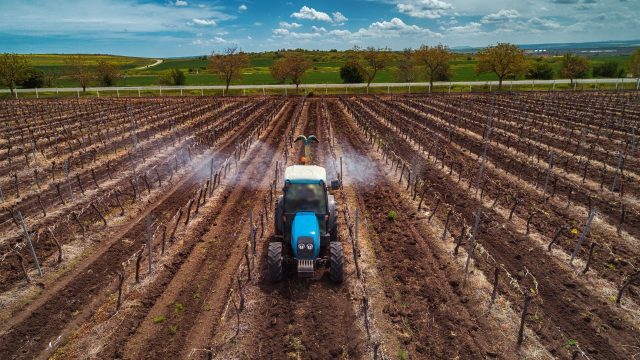30
Jun
Vineyard Pesticides Linked to Parkinson’s

(Beyond Pesticides, June 30, 2021) Vineyard farmers who spend more money on pesticide use are more likely to develop Parkinson’s disease, according to research published by French scientists in the journal Environmental Research. With Parkinson’s disease on the rise around the world, and emerging evidence growing for a Parkinson’s pandemic, it is critically important to suss out the factors at play. And as pesticides continue to appear as a driving force for this deadly chronic disease, it is increasingly necessary to pressure regulators to restrict use of these hazardous substances in chemical farming operations.
Researchers used a French National Health Insurance Database to identify incidents of Parkinson’s disease in farmers from 2010-2015. These data were then matched with pesticide expenditures recorded from over 3,500 French farming regions, taken around the year 2000. Models were adjusted for a range of health factors, including smoking, age, and sex.
Results show that accounts of Parkinson’s disease increase as pesticide expenditures increase for farmers working in vineyards. For the highest amounts paid for pesticides, Parkinson’s disease incidence is 16% higher. No connections were found for other cropping systems.
“This result suggests that agricultural practices and pesticides used in these vineyards may play a role in PD and that farmers in these farms should benefit from preventive measures aimed at reducing exposure,” the study reads. The strong link to vineyard production may be due to the sheer amount of pesticides being used in this farming system. Although vineyards account for only 3% of French land, 20% of pesticides purchased are for vineyards. Among the pesticides used, 80% are fungicides.
Researchers found an interesting divide between vineyards that produce wine with a “designation of origin” and those that do not, with those who spend considerably more money on pesticides. “Fighting against pests is a quality guarantee for vineyards with designation of origin, which leads them to increase the number of applications,” the authors write.
Fungicides have long been linked to the development of Parkinson’s disease. A 2008 study by scientists at UCLA found that chronic exposure to dithiocarbamate fungicides like ziram contributed to the development of Parkinson’s. A 2013 meta-analysis found that the fungicides maneb and mancozeb increased Parkinson’s risk by two times. This was found to be in line with the incidence associated with paraquat herbicide exposure, which is currently the subject of an increasing number of lawsuits due to that weed killer’s strong connection to the disease.
Beyond Pesticides Pesticide Induced Disease Database provides references to dozens of peer-reviewed scientific articles connecting the use of pesticides to Parkinson’s disease. The studies provide ample evidence that current regulations governing the use of pesticides are inadequate for the protection of public health. Although pesticide regulators can adequately capture the lethal dose of a pesticide, and often have a good understanding of its acute toxicity, chronic health impacts are woefully unaccounted for.
As a result of inaction by regulators at the U.S. Environmental Protection Agency (EPA) to address chronic diseases like cancer and Parkinson’s, those harmed by pesticide exposure have had to bring their case to the U.S. court system. Lawsuits against Syngenta’s Parkinson’s-inducing paraquat and Bayer/Monsanto’s carcinogenic glyphosate are a testament to the importance of litigation in holding companies responsible for the harm they inflict, but also an indictment of EPA’s weak regulatory process. Advocates argue that these lawsuits should not be necessary because the individuals adversely affected by these chemicals should never have been exposed to them in the first place.
It is critically important that we begin to unwind chemical farming operations in favor of organic practices, which are safer for farmers, workers, and consumers, as well as the wildlife and pest predators surrounding farm fields. Forward thinking laws and regulations are needed. Help us tell EPA to consider cutting edge science in risk assessments, so that we can prevent the next pandemic of chronic disease.
All unattributed positions and opinions in this piece are those of Beyond Pesticides.
Source: Environmental Research










